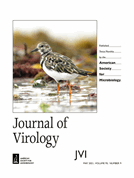Abstract Marburg and Ebola filoviruses are two of the deadliest infectious agents and several outbreaks have occurred in the last decades. Although several receptors and co-receptors have been reported for Ebola virus, key host factors remain to be elucidated. In this study, using a haploid cell screening platform, we identify the guanine nucleotide exchange factor… Continue reading Identification of CCZ1 as an essential lysosomal trafficking regulator in Marburg and Ebola virus infections
Tag: Emerging Viruses
Global and cell type-specific immunological hallmarks of severe dengue progression identified via a systems immunology approach
Abstract Severe dengue (SD) is a major cause of morbidity and mortality. To define dengue virus (DENV) target cells and immunological hallmarks of SD progression in children’s blood, we integrated two single-cell approaches capturing cellular and viral elements: virus-inclusive single-cell RNA sequencing (viscRNA-Seq 2) and targeted proteomics with secretome analysis and functional assays. Beyond myeloid… Continue reading Global and cell type-specific immunological hallmarks of severe dengue progression identified via a systems immunology approach
Scientist deliberately gave women Zika — here’s why
AI SummaryScientists have intentionally infected people with the Zika virus to test vaccines and found that infected participants had mild symptoms and did not become pregnant. This raises hopes for testing vaccines in controlled settings during low Zika incidence. This development was presented at a medical conference. Scientists gave doses of Zika virus (red; artificially… Continue reading Scientist deliberately gave women Zika — here’s why
Broad-spectrum antiviral candidate targets dengue and SARS-CoV-2
AI SummaryResearchers have identified 2-thiouridine as a potential antiviral drug that targets positive-strand RNA viruses, including dengue, Zika, and SARS-CoV-2. This drug may be effective against a range of diseases caused by these viruses. The newly identified 2-thiouridine (s2U) shows broad-spectrum antiviral activity against various ssRNA+ viruses including DENV, CHIKV, and SARS-CoV-2. Credit: Kentaro Uemura,… Continue reading Broad-spectrum antiviral candidate targets dengue and SARS-CoV-2
Functional and transcriptional heterogeneity within the massively expanding HLADR+CD38+ CD8 T cell population in acute febrile dengue patients
Neutralizing antibodies from prior exposure to dengue virus negatively correlate with viremia on re-infection
AbstractBackground India is hyperendemic to dengue and over 50% of adults are seropositive. There is limited information on the association between neutralizing antibody profiles from prior exposure and viral RNA levels during subsequent infection. Methods Samples collected from patients with febrile illness was used to assess seropositivity by indirect ELISA. Dengue virus (DENV) RNA copy… Continue reading Neutralizing antibodies from prior exposure to dengue virus negatively correlate with viremia on re-infection
Human skin organoids are valid models of mpox virus infection
AI SummaryHuman skin organoids are able to be infected by mpox virus and can produce infectious virus. Treatment with the antiviral drug tecovirimat can inhibit virus production and prevent changes in host genes. Skin organoid models are effective for studying mpox virus infection and testing therapeutics.Human skin organoids are susceptible to mpox virus infection and… Continue reading Human skin organoids are valid models of mpox virus infection
Kinetics of severe dengue virus infection and development of gut pathology in mice
The episodic resurgence of highly pathogenic avian influenza H5 virus
Abstract Highly pathogenic avian influenza (HPAI) H5N1 activity has intensified globally since 2021, increasingly causing mass mortality in wild birds and poultry and incidental infections in mammals1,2,3. However, the ecological and virological properties that underscore future mitigation strategies still remain unclear. Using epidemiological, spatial and genomic approaches, we demonstrate changes in the origins of resurgent… Continue reading The episodic resurgence of highly pathogenic avian influenza H5 virus


